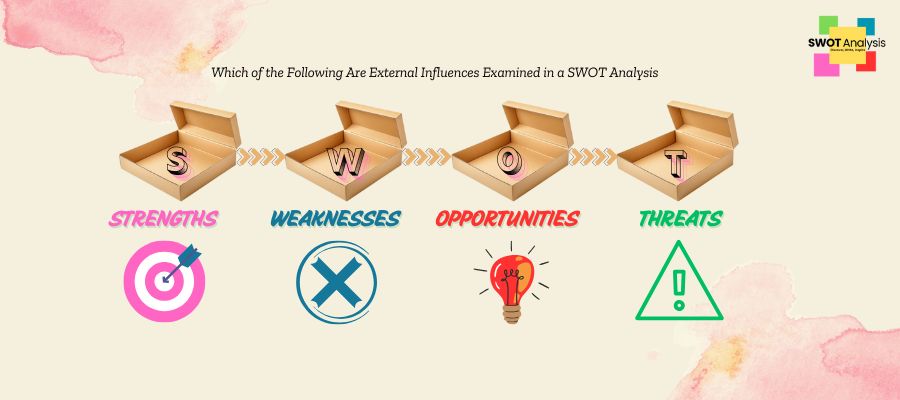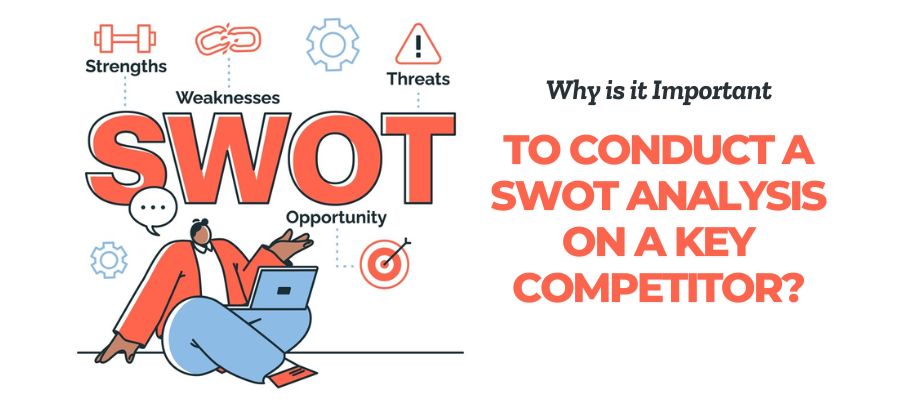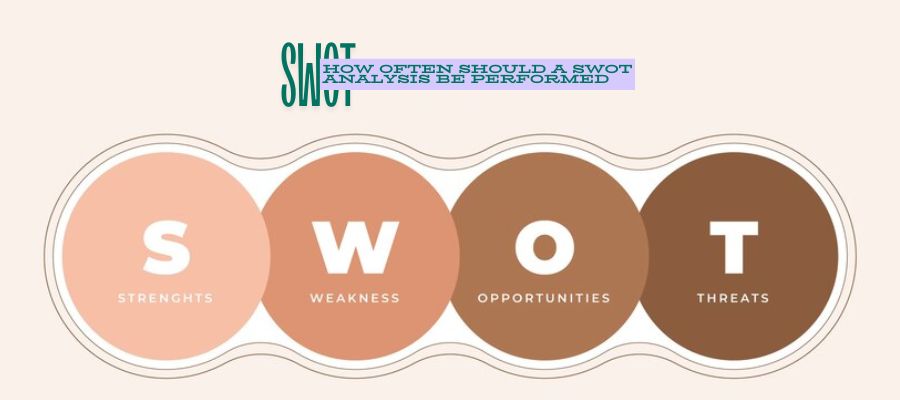Ever heard of SWOT analysis? It’s a tool businesses use to figure out their game plan, especially when they’re looking to go global. You look at your strengths, weaknesses, opportunities, and threats. Sounds simple, right? But when you’re dealing with international markets, it gets a bit more complicated. You have to think about different cultures, laws, and economies. This guide will walk you through how to use SWOT analysis to make smart moves in the international business world.
1. Understanding the Basics of SWOT Analysis for International Business
SWOT Analysis for International Business is a method that helps businesses look at their internal strengths and weaknesses, as well as external opportunities and threats. It’s like taking a good, hard look in the mirror to see what you’re doing well and where you can improve. For international businesses, this means understanding how your company stacks up in different markets around the world.
Importance of SWOT in Global Markets
In the global market, things are always changing. New competitors pop up, regulations shift, and customer preferences evolve. SWOT analysis is crucial because it helps businesses stay on top of these changes. By regularly assessing strengths, weaknesses, opportunities, and threats, companies can make smart decisions about where to focus their efforts.
Key Components of SWOT Analysis
- Strengths: What does your business do better than others? Maybe you have a unique product or a loyal customer base.
- Weaknesses: Where could you improve? These might be areas where competitors are outperforming you.
- Opportunities: What external factors could you take advantage of? This could be a new market opening up or a trend that aligns with your business.
- Threats: What challenges might you face? These could be anything from new regulations to economic downturns.
Understanding these components helps businesses craft strategies that align with their goals and the realities of the international market. It’s about being proactive rather than reactive, ensuring you’re ready for whatever comes your way.
2. Identifying Strengths in International Business
Leveraging Unique Products and Services
When you’re venturing into international markets, having something different to offer can be a game-changer. Unique products or services can set you apart from your competitors. Think about what makes your product stand out. Is it a special feature, superior quality, or maybe even the way you deliver it? Identifying these aspects can help you capture the attention of a global audience.
- Highlight the distinct features of your product.
- Ensure the quality meets or exceeds international standards.
- Consider how your delivery method can enhance the customer experience.
Building a Strong Brand Reputation
A strong brand can be your ticket to success in the global market. Your brand’s reputation is built on consistency, quality, and customer trust. Investing in brand-building activities like marketing campaigns and customer engagement can pay off big time.
- Maintain consistency in your branding across all markets.
- Engage with customers to build trust and loyalty.
- Use social proof, like testimonials and reviews, to enhance your brand image.
Utilizing a Skilled Workforce
Your team is one of your greatest assets. A skilled workforce can drive innovation and efficiency, helping you navigate the complexities of international business. Hiring local talent can also provide insights into the cultural and market nuances of each region.
- Invest in training and development for your team.
- Hire local talent to gain valuable market insights.
- Encourage a culture of innovation and adaptability.
3. Assessing Weaknesses in Global Operations
Recognizing Resource Limitations
Running a business internationally often means dealing with limited resources. Whether it’s a shortage of skilled workers or not having enough funds, these issues can really slow you down. Identifying these limitations early on can help you plan better and avoid surprises. You might find that your supply chain isn’t as strong as you thought, or maybe your technology is outdated. These are the kinds of things you need to know about so you can fix them.
Addressing Regulatory Challenges
Every country has its own set of rules and regulations, and keeping up with them can be tough. If you’re not careful, you might end up breaking a law you didn’t even know about. This could lead to fines, legal trouble, or even getting banned from doing business in that country. It’s important to have a team that understands these regulations and can help you navigate them.
Also Read: Personal SWOT Analysis: Examples and Template for Success
Improving Market Knowledge
When you enter a new market, there’s a lot you don’t know. You might not fully understand what customers in that area want, or how they prefer to shop. This lack of knowledge can put you at a disadvantage compared to local competitors. To improve your market knowledge, consider conducting surveys or focus groups, or even partnering with local businesses.
By recognizing these weaknesses, you can start to turn them into strengths. It’s all about being honest with yourself and your team about where you need to improve.
4. Exploring Opportunities for Global Expansion
Identifying Emerging Markets
Exploring new markets can be like opening a treasure chest. Emerging markets often offer untapped potential for growth. But how do you find them? Look for regions with growing economies or increasing consumer demand. Sometimes, it’s about spotting a trend before it becomes mainstream. Keep an eye on demographic changes and rising disposable incomes. Those are key indicators that a market might be ready for your business.
Adapting to Technological Advancements
Technology is moving fast, and keeping up is essential. Embracing new tech can give you a competitive edge. Consider how innovations like AI or blockchain can streamline your operations or enhance customer experiences. Think about how your business can integrate these technologies to improve efficiency or open new revenue streams. Remember, being an early adopter can set you apart from competitors.
Forming Strategic Partnerships
No business is an island, especially on the international stage. Forming strategic alliances can open doors you couldn’t access alone. Look for partners who complement your strengths or help mitigate your weaknesses. This could mean teaming up with local firms to navigate new markets or collaborating with tech companies to innovate. A well-chosen partnership can be a game-changer, offering resources and insights that propel your business forward.
Expanding globally isn’t just about entering new markets; it’s about evolving with them. Stay adaptable, be open to change, and always keep an eye on the horizon for the next big opportunity.
5. Analyzing Threats in the International Business Environment
Understanding Political Instability
When doing business internationally, political instability is a big concern. Countries can change leaders, policies, or even entire governments overnight. This unpredictability can mess with business plans and cause financial losses. For example, new regulations might suddenly increase costs or restrict operations. Businesses need to keep an eye on political news and have backup plans ready.
Navigating Economic Downturns
Economic downturns can hit any market, affecting everything from consumer spending to currency values. Being prepared for these downturns is crucial. Companies should diversify their markets and products to lessen the impact. Having a financial cushion can also help ride out tough times. It’s smart to regularly review economic forecasts and adjust strategies accordingly.
Managing Intense Competition
In the global market, competition is fierce. Businesses face rivals from all over the world, each trying to grab a bigger market share. To stay ahead, companies must know their competitors well. This includes understanding their strengths and weaknesses. Innovation and excellent customer service can set a business apart. Regularly updating products and services to meet customer needs is key.
In the ever-changing landscape of SWOT Analysis for international business, threats are a constant. Companies must be proactive, not reactive, in identifying and managing these risks. This approach ensures they not only survive but thrive in the global arena.
6. Developing Strategies from SWOT Analysis Insights
Capitalizing on Strengths
Once you’ve identified your company’s strengths, the next step is to figure out how to use them to your advantage. Strengths are your company’s unique advantages—whether it’s a strong brand, a loyal customer base, or cutting-edge technology. To make the most of these, consider how they can be used to improve your market position or enter new markets. For example, if you have a strong brand reputation, you might leverage it to launch new products or services.
Mitigating Weaknesses
Weaknesses are areas where your business might be lagging. It’s important to recognize these so you can address them head-on. Start by prioritizing which weaknesses are most critical to your international operations. Maybe it’s a lack of local market knowledge or insufficient distribution channels. Develop a plan to tackle these issues, such as investing in local market research or forming partnerships with local distributors.
Seizing Opportunities and Mitigating Threats
Opportunities and threats often come from external factors. Opportunities might include emerging markets or technological advancements, while threats could be anything from political instability to economic downturns. To seize opportunities, keep an eye on global trends and be ready to adapt. For mitigating threats, consider creating contingency plans or diversifying your investments to reduce risk.
In summary, turning SWOT insights into actionable strategies involves a balanced approach. Focus on enhancing what you do well, address what you don’t, and always stay alert to the ever-changing global landscape. This way, your business can thrive amid uncertainties and seize new opportunities as they arise.
7. Implementing SWOT Analysis in International Business Strategy
Integrating SWOT with Business Goals
SWOT analysis for international business isn’t just a checklist—it’s a tool to align with your broader objectives. Make sure your SWOT insights translate into actionable strategies that fit your company’s vision. Consider these steps:
- Define Clear Objectives: Know what you want to achieve internationally.
- Align SWOT Findings: Use strengths to support your goals, and address weaknesses that could hinder them.
- Set Measurable Targets: Establish KPIs to track progress and adjust strategies as needed.
Regularly Updating SWOT Analysis
The global market changes fast. Keeping your SWOT analysis up-to-date ensures you’re always ready to adapt. Here’s how:
- Schedule Regular Reviews: Set a timeline, maybe quarterly, to revisit your SWOT.
- Monitor Market Trends: Stay informed about global shifts that could impact your business.
- Adjust Strategies Accordingly: Be prepared to pivot based on new opportunities or threats.
Using SWOT for Informed Decision Making
SWOT analysis helps in making smart choices for international growth. When you understand your internal and external environment, decisions become clearer. Consider:
- Prioritizing Opportunities: Focus on markets where your strengths can shine.
- Risk Management: Use SWOT to foresee challenges and plan mitigations.
- Resource Allocation: Direct resources to areas with the most potential for success.
Conclusion
Wrapping up, and using SWOT analysis for international business is like having a roadmap. It helps you figure out where you stand and where you can go. By looking at your strengths and weaknesses, you get a clear picture of what you’re good at and what needs work. Spotting opportunities and threats in the market can guide you in making smart moves. It’s not just about finding problems but also about seeing the growth potential. So, if you’re thinking about taking your business global, a SWOT analysis is a handy tool to have in your kit. It’s all about making informed decisions and staying ahead in the game.
Frequently Asked Questions
1. What is a SWOT analysis?
A SWOT analysis is a tool used to identify strengths, weaknesses, opportunities, and threats related to business competition or project planning.
2. Why SWOT analysis for international business is important?
SWOT analysis helps international businesses understand their internal capabilities and challenges, as well as external opportunities and threats, enabling them to make informed strategic decisions.
3. How can a company identify its strengths?
A company can identify its strengths by analyzing what it does well, such as unique products, strong brand reputation, or a skilled workforce.
4. What are some common weaknesses in global operations?
Common weaknesses include limited resources, regulatory challenges, and lack of market knowledge.
5. How do businesses explore opportunities for global expansion?
Businesses explore opportunities by identifying emerging markets, adapting to technological changes, and forming strategic partnerships.
6. What threats should international businesses be aware of?
International businesses should be aware of threats like political instability, economic downturns, and intense competition.





